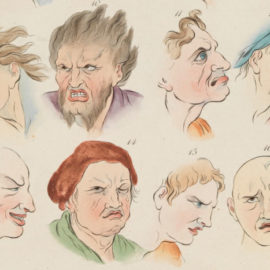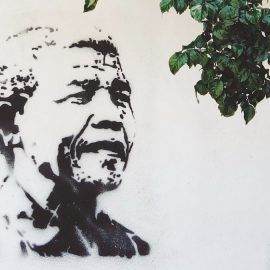
What really went on behind palace doors during Princess Diana’s tumultuous years as a royal? What drove her complex relationships with the press, her lovers, and her protection officers?
In Diana: Closely Guarded Secret, former royal protection officer Ken Wharfe shares intimate details about the Princess of Wales’s private struggles and triumphs. His unique position as her bodyguard and confidant reveals Diana’s genuine quest for authentic connections while navigating royal life.
Continue reading to take a front-row seat as Wharfe uncovers remarkable stories about one of history’s most captivating figures.
Overview of Diana: Closely Guarded Secret
From the perspective of her personal protection officer, Ken Wharfe’s memoir Diana: Closely Guarded Secret offers an intimate portrayal of the late Princess of Wales. Wharfe chronicles Diana’s quest for genuine connections and her desire for privacy amidst the unyielding scrutiny of the media spotlight.
The book explores Diana’s relationships, her dedication to charitable causes, her complex interactions with the press, and her efforts to forge an independent identity as her marriage to Prince Charles disintegrated. Wharfe provides insights into Diana’s personal struggles and her growing dissatisfaction with royal life, suggesting her yearning for autonomy may have contributed to the tragic circumstances surrounding her untimely death.
Diana and Her Bodyguards
Diana, feeling increasingly isolated within the monarchy and her failing marriage, found herself in need of a trustworthy confidante. Wharfe, who served as her protection officer, developed a deep bond with the Princess that went beyond his official duties. His unique position allowed him to witness firsthand the challenges Diana faced as she struggled to maintain her royal responsibilities while her marriage deteriorated.
The relationship between Wharfe and Diana was built on mutual understanding and trust. Early in their professional association, Diana began confiding in him about her personal struggles, particularly regarding Prince Charles’s infidelity and the feelings of loneliness and neglect that followed. A pivotal moment occurred during a holiday in Majorca, where Diana shared her deep concerns about Charles’s ongoing romantic relationship with Camilla Parker Bowles. This conversation opened the door for many future confidential discussions between them.
Wharfe recalls specific instances when Diana turned to him for support, such as when she faced the Queen’s disapproval of her work with AIDS charities, or when she felt humiliated by her husband’s behavior at an event hosted by Camilla’s sister. Through these narratives, Wharfe portrays the journey of a woman searching for authentic connections while navigating the complex and often hostile dynamics of royal family life.
Diana’s Relationships
Wharfe interprets Diana’s romantic relationships not as mere acts of defiance, but as manifestations of her search for love, comfort, and support that was lacking in her marriage.
Diana’s Relationship With James Hewitt
During a challenging period with Charles, Diana found comfort in her relationship with cavalry officer James Hewitt. Wharfe demonstrates intimate knowledge of their clandestine affair, having helped maintain its secrecy by arranging private meeting places and managing her discreet travel arrangements. Wharfe portrays Hewitt as charismatic and cooperative, someone who fully understood the importance of discretion. Yet while the relationship was marked by passionate moments, Diana became increasingly frustrated by Hewitt’s growing emotional demands. Wharfe views this affair as evidence of both the fundamental problems in Diana’s marriage and her desperate search for emotional connection.
Diana’s Obsession With Oliver Hoare
Wharfe describes the Princess’s obsession with Oliver Hoare, a prominent figure in the art world, as a destructive infatuation that grew beyond control. He details how Diana’s fixation manifested through countless phone calls and relentless attempts to secure Hoare’s attention. Unlike James Hewitt, Hoare showed little interest in handling the responsibilities that Wharfe found himself managing in this situation. Wharfe repeatedly cautioned Diana about the consequences of pursuing a married man, but his warnings went unheeded. The intensity of her obsession, reflected in her persistent phone calls, ultimately led to Hoare’s wife reporting the harassment to the police—an event Wharfe characterizes as deeply embarrassing. Wharfe sees this obsessive behavior as symptomatic of Diana’s emotional turmoil during her marriage’s collapse. Despite the negative press coverage and surrounding chaos her actions generated, Diana appeared unmoved by the consequences.
Diana in the Public Eye
The book examines the relationship between Diana’s public persona, her sincere humanitarian work, and her sophisticated management of the media. While Diana actively sought public recognition, Wharfe maintains that her dedication to charitable causes was genuine. He reveals how she skillfully navigated her relationship with the press, demonstrating both her ability to direct media attention and her genuine distress over their invasive coverage.
Diana’s Humanitarian Efforts
Diana strategically leveraged her position and charitable work to create a public image that resonated deeply with people worldwide. While she was aware of media influence on her public perception, Wharfe maintains that this didn’t diminish the authenticity of her commitment to helping those in need. He cites multiple instances that demonstrated Diana’s genuine dedication to charitable causes, highlighting both her compassionate nature and her ability to form meaningful connections with those she encountered.
Wharfe details Diana’s philanthropic commitments, particularly her advocacy for AIDS patients and her collaborations with organizations like the International Red Cross and the Leprosy Mission. He illustrates her courage through her frequent visits to care facilities, where she spent time with terminally ill patients. These actions demonstrated her willingness to engage with society’s often-marginalized members, transcending both personal apprehensions and social stigmas. Through her involvement with organizations like Relate, which provides marriage counseling services, Diana utilized her royal influence to promote mental health and family welfare initiatives. Wharfe contends that Diana’s humanitarian work was driven by a genuine desire to create positive global change.
Criticism for Her Philanthropic Work
Wharfe explains that Diana’s distinctive approach to charitable work created tension within the royal establishment, as it challenged the monarchy’s traditional image. According to his observations, both the Queen and members of Prince Charles’s inner circle disapproved of Diana’s dedicated support for AIDS patients. Nevertheless, Diana remained resolute in her philanthropic work, addressing sensitive issues with courage and confronting controversial subjects head-on. Her commitment to helping the homeless and her campaign against land mines demonstrated her determination to create meaningful change, regardless of personal cost.
Diana’s Complex Relationship With the Media
Wharfe examines Diana’s complex relationship with the press, showing how she masterfully managed media attention while simultaneously struggling with their persistent intrusion into her life. The princess understood the mutual dependence between her public image and media coverage, strategically engaging with select media representatives to shape her public persona and advance her charitable initiatives.
Through specific examples, Wharfe illustrates Diana’s tactical approach to media relations. He describes how she would share information with friendly journalists, particularly those from a specific British newspaper, to ensure favorable press coverage. Diana also demonstrated considerable skill in managing photo opportunities, allowing press access while maintaining control over her narrative. A notable example occurred during her holiday at Necker Island, where she negotiated photography sessions in exchange for privacy, revealing her understanding of the media’s desire for compelling photographs and her ability to leverage this for personal benefit.
Diana’s Longing for Privacy
The book frequently explores Diana’s yearning for a normal existence away from the public eye. It details her sometimes impulsive decisions that put her safety at risk, such as when she leaped from a hotel balcony in Lech, Austria. Wharfe argues that this reckless act stemmed from her desperate need to escape the constant surveillance that came with her royal status. He also describes her frustration with paparazzi who followed her even to private retreats like Necker Island during holidays. Through these anecdotes, Wharfe illustrates the personal toll of fame and Diana’s desperate attempts to find moments of peace.
Wharfe examines Diana’s troubled relationship with the media, emphasizing her sense of betrayal and exasperation with their relentless pursuit. Wharfe describes her profound distress over their harassment, including incidents like the intrusion at the Cairo swimming pool. He details her frustration over the public release of private phone conversations and the constant examination of her personal life. While Diana understood the media’s influence, Wharfe argues that she deeply resented their intrusive behavior, especially concerning her children. He maintains that this persistent media scrutiny significantly impacted her mental health and intensified her desire to seek refuge.
The Unraveling of Diana and Charles’s Marriage
The book examines the breakdown of Diana’s marriage to Prince Charles and her quest to create a new identity beyond the royal establishment. Wharfe contends that Diana’s actions were driven not merely by malice or ambition, but by a genuine yearning for independence and self-sufficiency. He reveals her private plans to build a life separate from the royal family, suggesting that this desire for freedom may have contributed to her untimely death.
The growing alienation and bitterness within Diana and Charles’s marriage becomes evident through Wharfe’s account. Diana’s sense of exclusion intensified as Charles maintained his relationship with Camilla Parker Bowles, leading her to seek solace elsewhere. The deteriorating dynamics within the Wales household manifested through frequent conflicts and diminishing communication between the couple.
A turning point in both public perception and Diana’s private life came with the publication of Andrew Morton’s Diana: Her True Story. Though Wharfe was unaware of Diana’s secret involvement with the book, he sensed she was undertaking a dangerous venture during its creation. Diana was determined to expose the reality of her troubled marriage and sought recognition of her suffering from the royal family. The book’s revelations about Charles’s infidelity and Diana’s struggles with bulimia and depression not only damaged the Prince’s reputation but also challenged the royal family’s carefully maintained public image.
Diana’s Quest for Self-Identity and Independence
Wharfe characterizes the post-separation period as a time of significant personal growth for Diana. She was determined to forge her own path in life, independent of both her husband’s influence and the monarchy’s constraints. However, her efforts to develop an individual identity conflicted with her royal obligations, creating tension with the palace establishment. According to Wharfe, royal officials attempted to control Diana’s public image and curtail her independence by limiting her appearances at public events and removing her name from the Court Circular. These restrictive measures only intensified her determination to achieve autonomy.
Diana’s quest for autonomy extended beyond establishing a unique public identity. According to Wharfe, the Princess longed for a life unburdened by royal duties and contemplated a complete separation from the royal family. He observed her growing frustration with the monarchy and her yearning for a more ordinary existence.
As Wharfe describes, Diana envisioned dissolving her marriage to Prince Charles and creating a life independent from the royal institution. As her discomfort with royal obligations intensified, she sought to forge a new path focused on charitable work and personal aspirations. Wharfe maintains that Diana viewed herself as a champion of the people, seeking a role that would transcend the limitations of her aristocratic background.
Wharfe argues that Diana’s determination to break free from the “system” ultimately contributed to her tragic and premature death. Her increasing disregard for security protocols became the main factor that ended their professional relationship. According to Wharfe, the fatal incident in Paris might have been prevented if Diana had kept her police protection. He maintains that her pursuit of independence, particularly her decision to reject Scotland Yard’s security detail, initiated a sequence of events that led to her untimely death.






